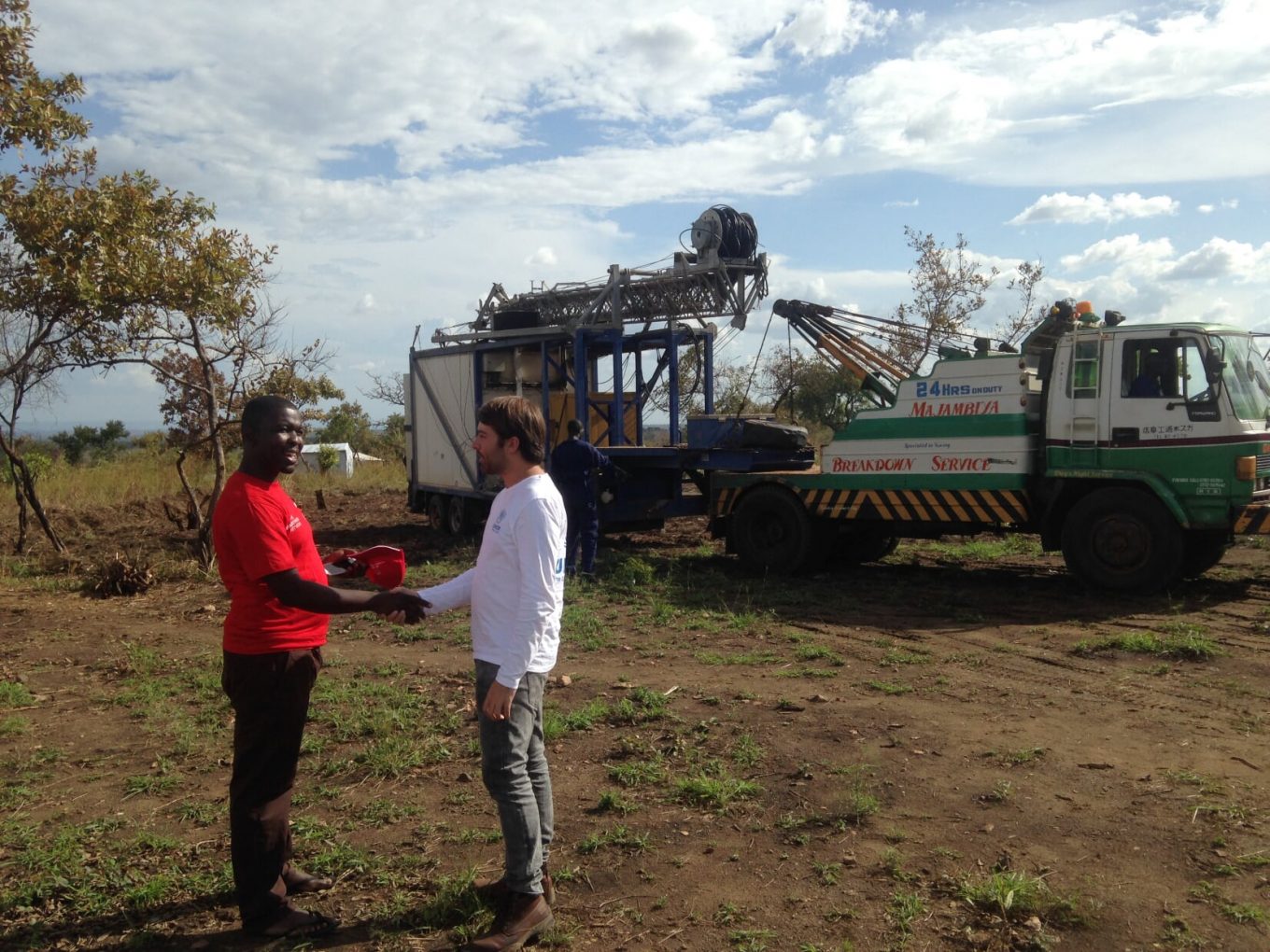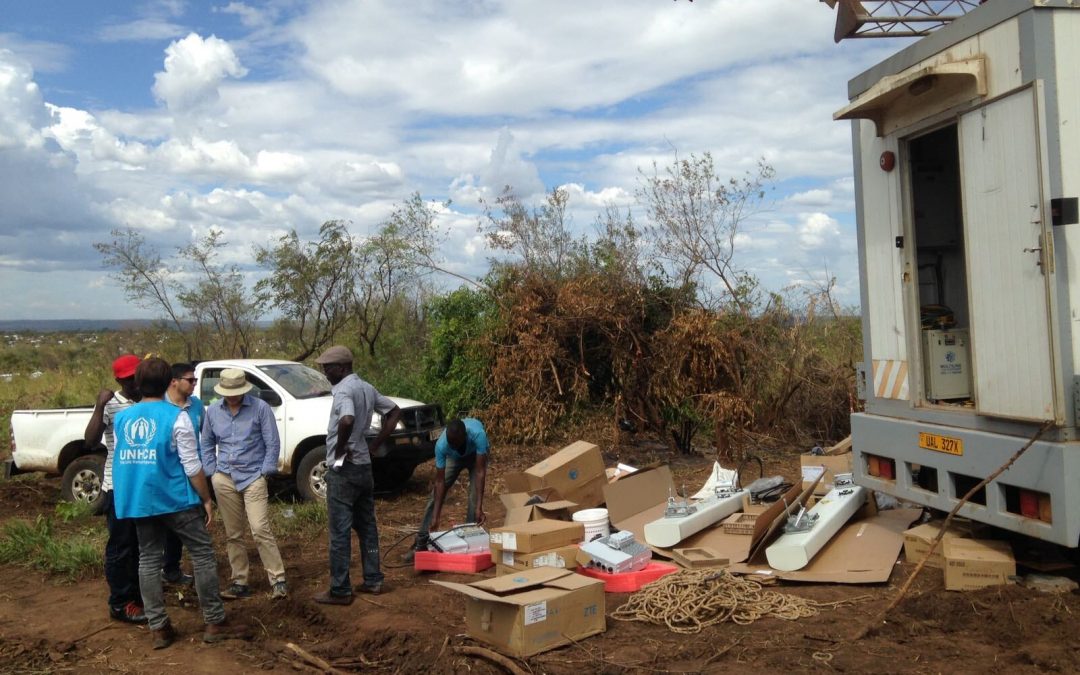The refugee and connectivity equation
When hundreds of thousands of refugees started to flee South Sudan in the summer of 2016 and settle in West Nile, a remote rural region of Uganda, the roads were in poor condition, there was limited access to electricity, and almost no connectivity. The place felt disconnected and abandoned from the rest, people felt disconnected and abandoned too, as if they just found themselves there and did not know what to do with that.
Recently, things have changed. Two years down the line, there is better infrastructure, roads, and access to the Internet. UNHCR recently published this story about how connectivity is changing the lives of the refugees across all the settlements and reshaping the area. Or perhaps, and more accurately, refugees are reshaping the landscape and bringing in resources and much-needed change. From an isolated and disconnected region to one where small businesses are slowly starting to emerge and the refugee and host communities can equally benefit from connectivity: how did we get here? The short answer is: together. For the longer one, read on.
In this piece, we would like to take a moment to go behind the scenes and look at how network coverage can (read: should) be extended to displaced populations. This is also a chance for us to reflect on a two-year journey that started with informal conversations and small-scale investments, the impact of which we are still seeing today.
A long road to 3G
During an assessment mission in September 2016, UNHCR’s Innovation Service identified that mobile network coverage across West Nile was a patchy 2G signal at best. With limited access to connectivity, refugees found themselves in an information vacuum, unable to use financial services, connect with their families, and find opportunities. The local community was in no better place with regards to access to connectivity. The lack of coverage wasn’t a big surprise given the very low density of population living in the region. Why provide connectivity to only a handful of people? Unfortunately, sometimes numbers matter. And in this case, the numbers changed. With thousands of new arrivals from South Sudan the pressing connectivity needs in the area started being heard and seen as a potential and promising new market.
Recognising that UNHCR cannot connect the refugee population in these settlements by itself, the Innovation Service, working closely with UNHCR’s Uganda operation, aimed to rapidly build partnerships with those that could help solve the connectivity problem – Mobile Network Operators (MNO).
This started in September 2016 through direct conversation and liaising with the three market leaders: Airtel, Africell and MTN. Early conversations were followed by research, documentation, and connectivity mapping or, in this case, connectivity gapping, with Airtel, Africell and MTN, the three market leaders in Uganda. Engaging with the MNOs was crucial in this journey and we want to put emphasis on some of the most important steps of this process.
Promising practices for working with MNOs
Find and connect with the right people (and mindsets).
Change doesn’t just happen. It happens if someone makes it happen. Understanding the context, identifying the gaps and finding your allies and making the connection is the place to start. At this stage, buy-in from the MNOs’ senior management made a difference and it helped to move things ahead, faster. Early discussions included alerting MNOs to the new population centres, highlighting poor coverage areas and sharing GPS coordinates to help with their planning processes. Simultaneously we learnt of their overarching infrastructure plans and began to understand more regarding fiber lines in the country and critically how serious they were about serving the refugee market. For example, Airtel is planning to expand 3G coverage across 85% Uganda, including the rural areas, and extend 4G to 50% of the country.
Research, get that data, and package it right.
Information matters: demographics, topography, infrastructure, connectivity mapping. It is important to gather the data and package it right for the MNOs to make the case. This makes it easier to understand the context, gauge the situation and, ultimately, make decisions. What you are trying to build is a business case and show clearly that investment X will have impact Y. In Northern Uganda, MNOs brought more engineers to the field and further assessments were undertaken to identify key areas such as markets, schools and community centres which required improved connectivity. Throughout this ongoing discussion, UNHCR ensured that updated coordinates and population figures were shared with all operators to promote competitive pricing and provider choice for refugees. We also went on follow-up missions to strengthen the MNOs’ initial commitment and demonstrate both the scale and impact of the interventions. With over 500,000 refugees in the four settlements, there was a new market for the operators to explore.
You’ve got your argument. Use it.
Data is power, right? Now that you have your business case, you can use it to advocate and strengthen the MNOs engagement. We like calling it a business case, because here you are really talking numbers and clients, or customers. In this case, advocacy happened both in Kampala and at the regional level with UNHCR pushing the connectivity agenda forward.
The results?
Early action showed good results and the initial investment has been instrumental in moving in the right (connectivity) direction and attracting further investments.
In Uganda, the MNOs were able to mobilise resources quickly – within three months of initial engagement all operators had established mobile towers in Bidi Bidi settlement. This included three towers providing 2G and 3G services to UNHCR’s base-camp and Zone 1, an additional tower in Zone 2 and finally Zone 5 being connected. The improved coverage across some areas of Bidi Bidi not only meant that refugees were more able to connect with families and friends in South Sudan and across the settlement area, but that they were also able to access information and value added services such as mobile money. Some Cash Based Initiatives started and scaled rapidly to 10,000 households. Network providers also distributed thousands of SIM cards free of charge and assisted with registration. In what seemed no time, 11 new mobile masts popped up across the region bringing additional connectivity and mobile services to thousands of refugees and host community members.

Towers up, barriers down?
Temporary towers, we know, have a limited radius and, as the settlements keep growing, the coverage provided through these towers can easily become insufficient. Yes, both temporary and permanent towers are being established, but there are still gaps in the network coverage in some parts of the settlements and the capacity of the towers is far from being sufficient to serve all users. Other challenges pertain to affordability, both of devices, airtime and data bundles. Another obstacle mentioned in many of our consultations is charging options, both in terms of availability and affordability. So despite this being a successful journey so far, there are still challenges around connectivity and access to this day. The road to rebuilding a sense of connection in situations of displacement is a long and insightful one: among the obstacles, we find on the path, there are valuable lessons we can learn. Keeping these lessons in mind, but not losing sight of the vision lying ahead, we progress towards better network coverage and better connection.
Have you been working with MNOs or other partners and you want to tell us about your experience? We are here to listen. Please send us an e-mail at hqconref@unhcr.org

